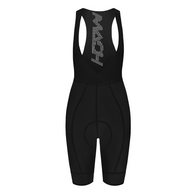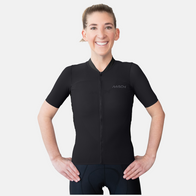
The Evolution of Triathlon Gear
As a new triathlete, the amount (and expense) of gear to enter into the sport can seem overwhelming - the triathlon-specific wetsuits, TT bikes costing up to $12k, endless pairs of running shoes, triathlon kits, chamois butter - the list goes on. But look no further than a few decades ago and you can see the leaps and bounds that have been made in designing and manufacturing comfortable, aerodynamic and increasingly affordable triathlon gear.
In order to fully demonstrate how impressive triathlon gear is today, we need to do a quick leap back in time and talk about its evolution.
With the first Ironman race taking place on the island of Oahu in 1978, the technology, equipment and clothing available was exceptionally different than what we see today. The first photo of an athlete on the Oahu Ironman course, back then operating as the Nautilus Triathlon, was taken in 1980, where cyclist Bob Babbitt sported a RadioShack radio on his handlebars, a simple road bike and no helmet in sight.
Over the course of the 1980s, most athletes could be seen sporting a speedo or one-piece swimsuit during the 2.4-mile swim, changing into a pair of tight Lycra shorts, loose-fitting cycling jersey and almost bucket-like helmet for the 112 mile bike course, and sporting an outfit resembling a track uniform for the 26.2-mile run. And thankfully, during this decade, we saw helmets as a regular occurrence on the bike course. PHEW.
As we branch into the 1990s, we see the clothes get tighter, bikes get more aerodynamic and the running gear - well let’s just say, there were a lot of Speedos. During these two decades, the prominence of aerobars grew and with that came the advent of the Time Trial (TT) bike, now the all-but-ubiquitous training and racing choice for the modern triathlete. Additionally, we see the appearance of outfits that start to resemble what we know today as triathlon/aero suits.
During the first decade of the 2000s, the TT bike became the universal racing machine for most long-distance triathletes. With this also came the appearance of some of the first aero helmets, specifically within the higher ranks of Ironman athletes. And while we still see a lot of the same during this decade (think skinsuits, Speedos and one-piece bathing suits), there are several subtle iterations in the gear and equipment that brings us to what we have today.
It is important to mention that, while not seen in the photos from the World Championships in Kona due to warm water temps, the piece of equipment that has changed the most over the past four decades is the triathlon wetsuit. From baggy, heavy and absorbent four decades ago to sleek, minimal and flexible at present, the triathlon wetsuit has undoubtedly seen the biggest changes since the early days of triathlon.
And that brings us to present day - where the outfits are as tight as ever, the helmets are as aero as ever and the bikes are beginning to look more like spaceships than bikes! With both the ITU and IRONMAN circuits, the racing outfits are close to the same. ITU is much stricter with its regulations, however, keeping the skinsuits sleeveless, tight to the skin and with a light chamois for comfort on the bike. In IRONMAN, athletes are much freer to wear the outfit that best suits their comfort level - either with aero sleeves or sleeveless and coming in a two-piece kit or an aero suit.
With most gear only varying slightly in price, appearance and unique characteristics, triathlon apparel companies are constantly looking for ways to set themselves apart. Here at Mach, we have done exactly that - where our price, appearance and unique product features are exceptionally different than other companies on the market. Minimal yet eye-catching designs, eco-friendly and anti-microbial material made from recycled plastic water bottles and gender-specific chamois set us apart from the competition and ensure you are able to break barriers in comfort without sweating your environmental footprint.











